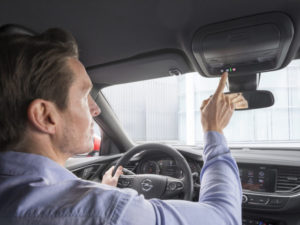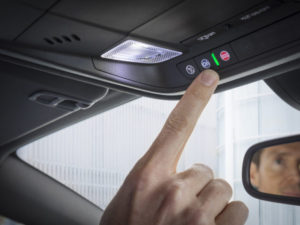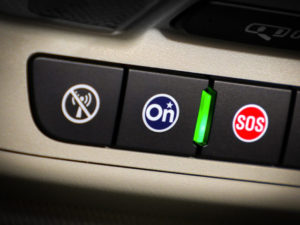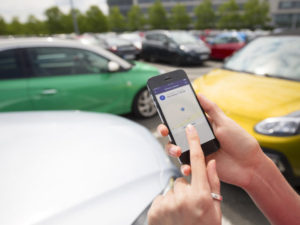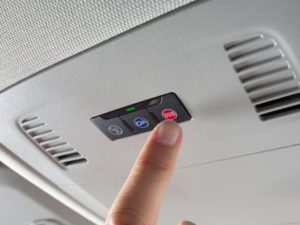How OnStar has changed the way fleets, drivers and vehicles interact
The global rollout of OnStar has changed the way fleet drivers can interact with their vehicles and how managers can extend their duty of care. Curtis Hutchinson asks what’s next for the telematics offering.
Even as increasing fitment of new technology such as Advanced Driver Assistance Systems (ADAS) is working to reduce collisions involving newer cars, the cost of repairing bodywork damage is rising. Insurers are usually amongst the first affected by such increases, so motor premiums naturally follow. But typical end of lease repairs and other bodywork completed without an insurance claim will also soon cost more. Thomas Hudd, Repair Technology Centre operations manager at the UK’s Thatcham insurance research centre sees several key reasons: “The reparability of equipment – and with rapidly changing technology, who knows how long its life will be.”
Thousands of companies around the world running GM marques on their fleets are reaping the benefits of the OnStar telematics service. The system may date back to the late 1990s but its evolution has accelerated in recent years with the rollout of new generation telematics technology and the promise of more to follow.
The subscription-based GPS service had already clocked up seven million users in North America, China, Mexico and South America before it launched in Europe in November 2015. The global figure is now closer to 13 million users with over 1.5 billion customer interactions logged since it first debuted in the US in 1996.
With the plethora of connected and telematics services available in the automotive sector, OnStar arguably leads the way in terms of its sheer scope. While the system provides useful in-car connectivity features, such as a Wi-Fi hotspot, it also boasts many tangible fleet-friendly functions including vehicle diagnostics (covering tyre pressures, oil life and bulb outages), an accident response service and stolen vehicle tracker.
Closely connected
The key USP, though, is that drivers using the system can talk to a trained advisor at the push of a button, adding a reassuring level of personal interaction.
Just two years after its European debut in the UK and Germany, the service has been rolled out to 22 countries with continental operations run from Vauxhall’s head office in Luton and a contact centre in Bucharest. Its usage is high with 494,000 active subscribers across Europe, 24% of whom are fleet users; a figure Vauxhall and Opel expect to grow as the technology is introduced into successive new generation vehicles.
“OnStar offers a free fleet portal available to fleet managers who have Vauxhall or Opel vehicles. This portal is able to give increased control over their fleet and provide them with vital information on the health of their vehicles enabling them to better manage their fleet and save money,” says Rebecca Lawman, marketing manager for OnStar Europe.
Importantly for Vauxhall and Opel the technology gives both brands the opportunity to differentiate themselves in the fiercely competitive fleet market. “OnStar provides an attractive offering when making a decision about which brand to choose from,” believes Lawman. “We currently have a large number of fleets signed up to OnStar accounts in 21 countries across Europe. OnStar can also work with companies to provide a direct data feed with key vehicle information directly in to their own fleet management platform.”
A fundamental part of any company’s role is ensuring the safety and security of their drivers, something that Lawman says is achieved with the system she markets. “OnStar is able to support fleet managers in providing a duty of care to their drivers through key services such as automatic crash response, which means that in the event of a crash OnStar is there; an advisor will work with the local emergency services to dispatch help even if the driver is unable to communicate.”
What’s next for OnStar?
Clearly there are some tantalising opportunities that could further benefit fleet operators and company car drivers around the world. For instance, while OnStar is introduced to new car lines launched by GM’s brands it is not currently available in vans.
A rollout to commercial vehicles would create a significant new market for the system and would help boost the connectivity potential of hundreds of thousands of businesses around the world.
There’s also the issue of what happens next with Vauxhall and Opel as both European brands were sold by GM to PSA in August. This means the OnStar service is now operated in Europe under licence from GM in Detroit. Although the precise details of the licensing agreement are not known, a tantalising prospect could be the future appearance of a Blue OnStar button in Peugeot, Citroen and DS models. Time will tell.
What is OnStar?
OnStar uses GPS and cellular technology to provide connectivity and telematics services to cars. The service connects drivers directly with an advisor, providing them with a real-life trained personal assistant 24/7. So, if a driver is on the move and either has not had time to key in their destination or does not know the exact address then they can ask for help from the advisor by pushing the OnStar button and having a hands-free conversation. The clever part is the address, once identified, is then downloaded into the car’s sat nav system without any driver intervention.
An extension of this service is the emergency response notification that detects if an airbag has been deployed, which prompts an assistant to call the driver to check if they’re okay and ask if they need assistance. If there is no response then a call is made to the emergency services who are given the car’s precise location.
The system also includes roadside assistance services where a call to the OnStar team will ensure users receive help as quickly as possible. Additionally, the technology can be used to track and disable a stolen car. Once the theft is reported to the police and the driver has passed the crime number to OnStar, the vehicle is then tracked and disabled once the ignition is switched off and the police are notified of the location.
OnStar also offers a comprehensive vehicle diagnostics service particularly useful for fleets. Information on fuel economy, tank range, oil life, mileage and tyre pressure is easily accessible, while OnStar can also send a monthly email showing a host of data to help analyse and monitor costs. A diagnostics check can be requested at any time by drivers at the push of a button, providing peace of mind before setting off on long journeys.
The system also provides a Wi-Fi hotspot, via 4G, for up to seven devices.
- OnStar in Numbers…
- Service launched in US in 1996
- Debuted in Europe in 2015
- 118,560 fleet users in Europe
- 13 million global
- 1.5 billion customer interactions since launch
OnStar tested
I’ve been testing the OnStar service in a Vauxhall Insignia Tourer. It’s an impressive and engaging piece of technology that can empower drivers by helping resolve all manner of issues from finding the nearest restaurant or hotel in an unfamiliar location, to unlocking the car if you’ve managed to lock yourself out.
The system works by way of a blue OnStar button located in the overhead centre console. Once activated this puts you in touch, hands-free and at any time of day, with a friendly personal assistant. There’s also an SOS button for users to request assistance if, for example, they witness an accident or have broken down.
There’s also a geek-friendly app, which provides real time data on the car’s range and fuel consumption. It also lets you lock and unlock the car. Best of all, though, is the ability to sound the horn and flash the lights if you’ve forgotten where you parked in a busy car park.

